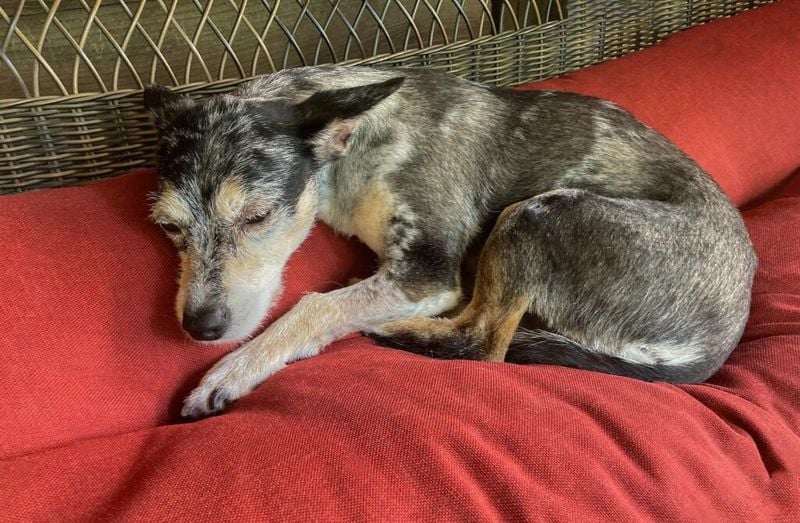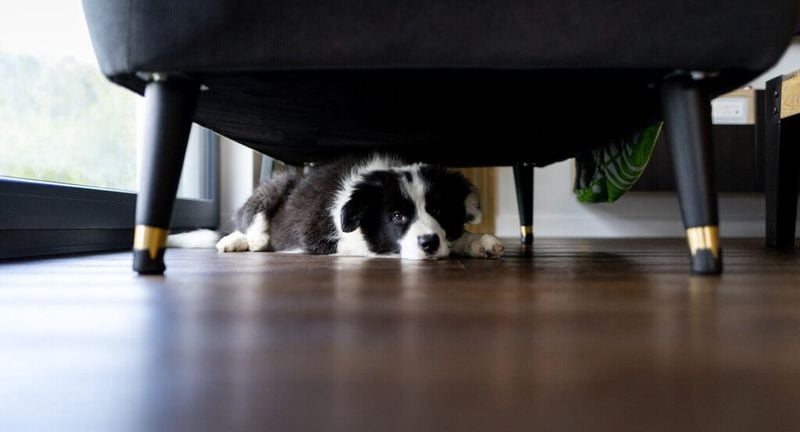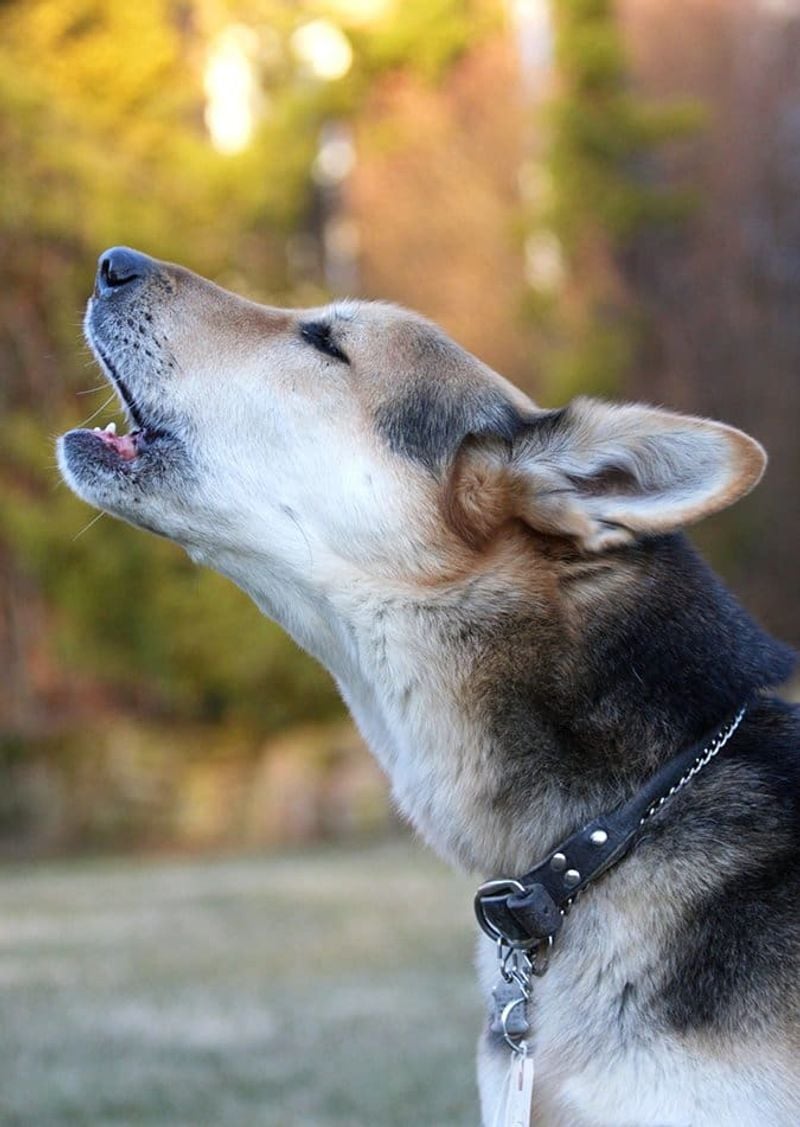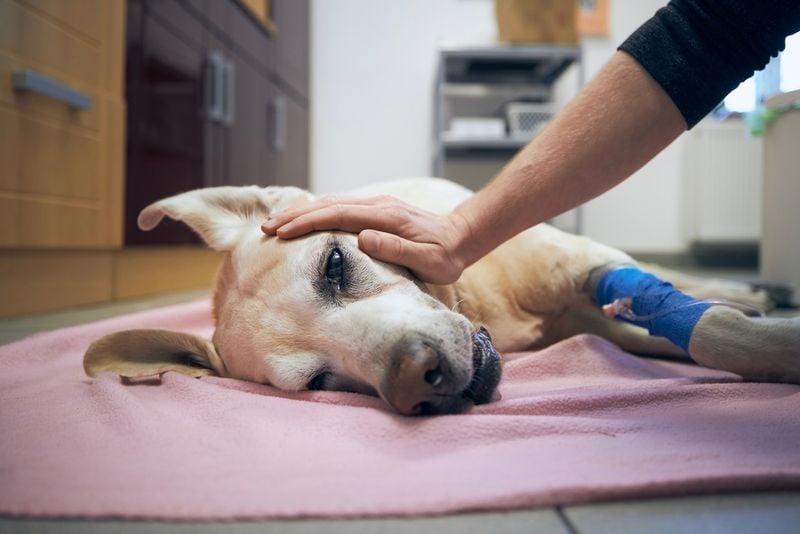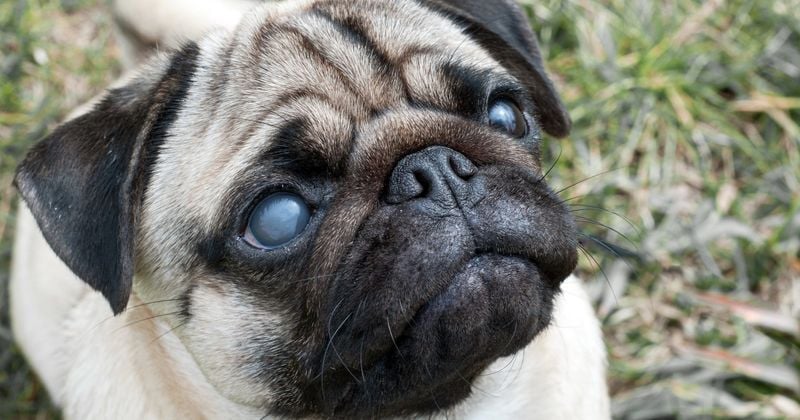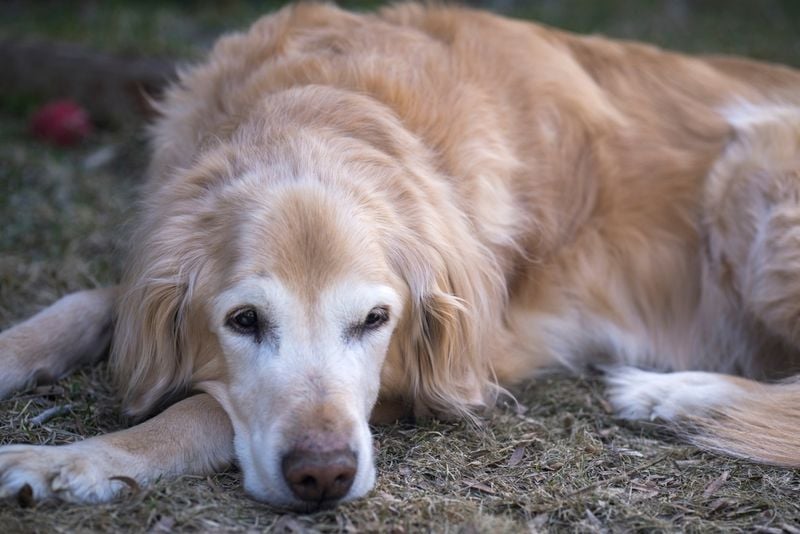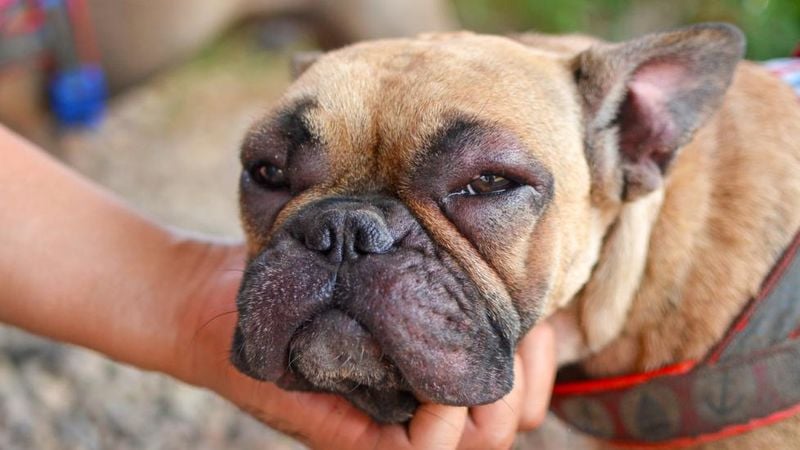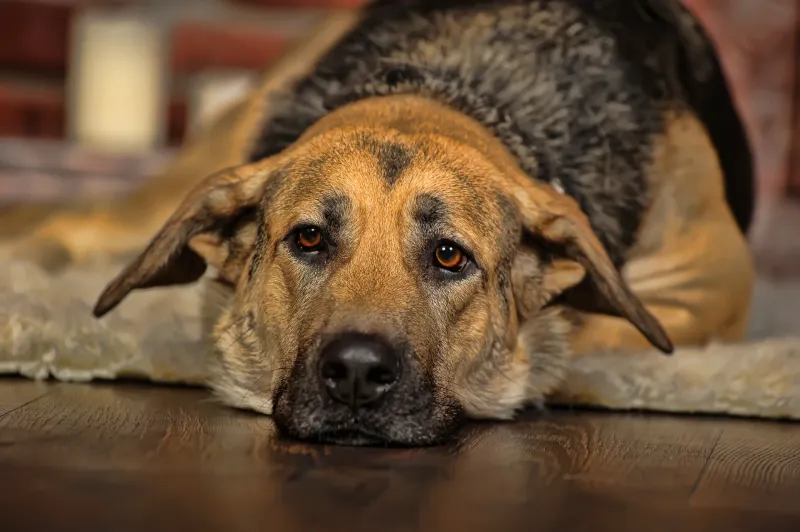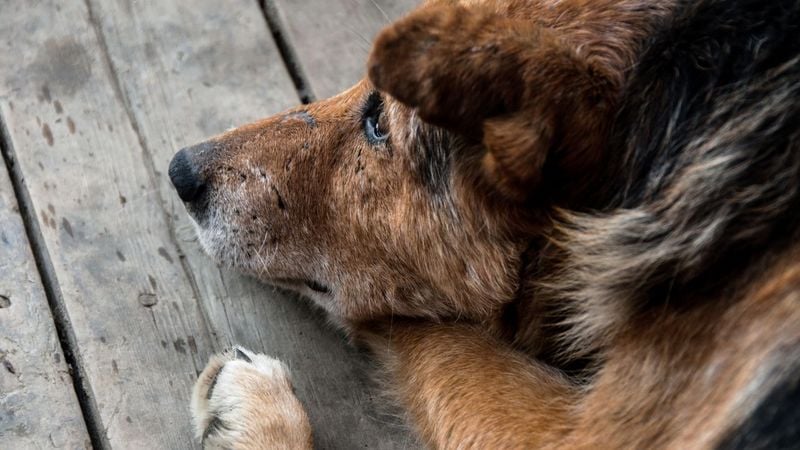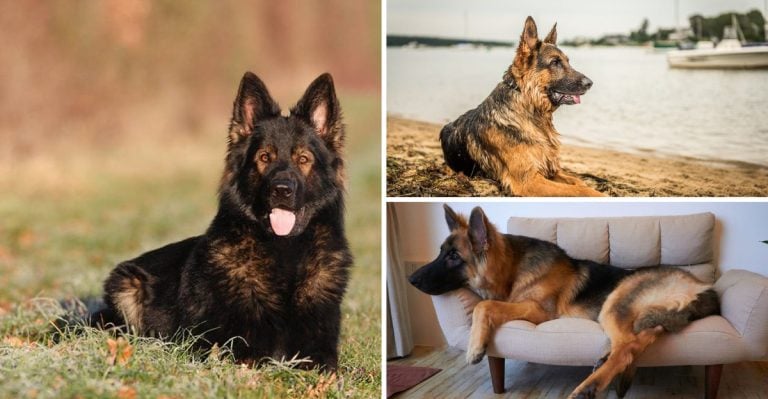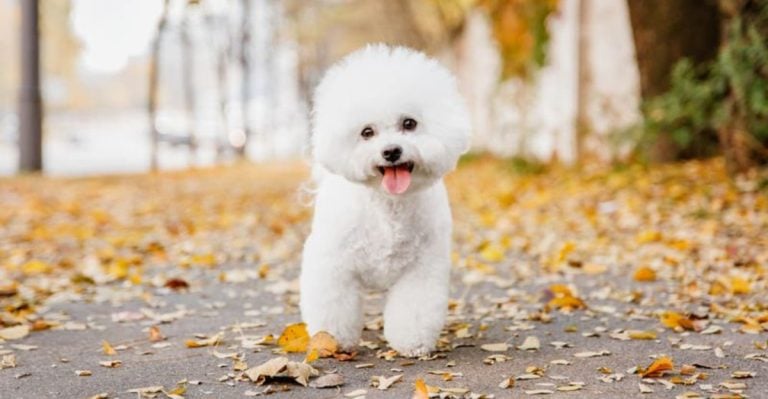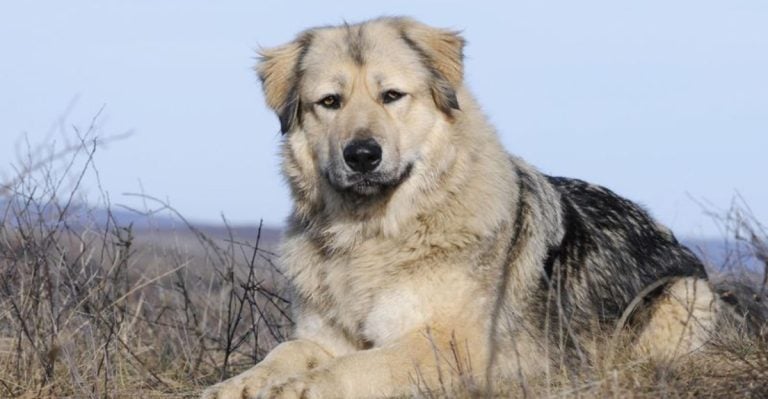These 25 Heartbreaking Signs Show Your Dog Is Saying Goodbye
Saying goodbye to a beloved dog is one of the hardest things any pet parent will ever face. Our dogs aren’t just animals—they’re loyal companions, constant shadows, and cherished family members. They’ve celebrated our best moments and offered quiet comfort through our worst. And when the time comes for them to leave us, they often don’t use dramatic gestures. Instead, they communicate in soft, subtle ways that can be easy to miss if we don’t know what to look for.
Veterinarians and pet behavior experts agree: dogs often show a pattern of emotional and physical signs as their bodies begin to shut down. Some signals may seem like normal aging—like sleeping more or slowing down—but others can be surprising, such as unusual barking, isolating themselves, or even sudden restlessness. These moments aren’t just symptoms of decline—they’re a dog’s way of preparing us, and themselves, for a peaceful goodbye.
Knowing what to expect can help you make your dog’s final days as comfortable, loving, and dignified as possible. Whether you’re seeing just one or several of these signs, awareness gives you the opportunity to respond with compassion, offer comfort, and prepare for the most humane next steps. It also ensures that you won’t mistake these meaningful cues for simple bad behavior or aging quirks.
Below, we’ve compiled 25 heartbreaking but important signs that dogs may exhibit near the end of their life. Every pet’s journey is different, but if your dog begins showing several of these behaviors, it could mean they’re trying to tell you something no words can express: they’re tired, they love you—and they’re ready to say goodbye. Being able to recognize these signs is a final act of love, and one your dog will never forget.
1. Appetite Fades Away
Food refusal is one of the most telling indicators your furry friend might be saying goodbye. Even treats that once made their tail wag frantically might sit untouched.
The body’s natural shutdown process often begins with decreased interest in eating. Your pup’s metabolism changes as vital organs slow down their functions.
Try offering small amounts of soft, aromatic foods by hand. Sometimes the comfort of your presence might encourage a few bites, though don’t force feeding if they truly refuse.
2. Energy Vanishes
Your once bouncy companion now spends hours lying down, barely acknowledging your presence. This profound lethargy goes beyond normal aging tiredness – it’s a deep exhaustion that comes from within.
Many pet parents notice their dogs struggle to summon energy even for previously exciting activities. The body conserves what little strength remains for essential functions only.
Provide comfortable resting spots throughout your home so your dog doesn’t have to travel far between naps. A supportive orthopedic bed can ease joint pain during these extended rest periods.
3. Playtime Becomes Meaningless
Remember how your pup would sprint across the yard for their favorite ball? That enthusiasm gradually disappears as they prepare to say goodbye. Toys collect dust in the corner while your dog watches with disinterest.
This loss of joy in previously loved activities often breaks a pet parent’s heart. Your dog isn’t being stubborn – their body and mind are focused elsewhere now.
Rather than forcing play, consider gentle alternatives like soft petting sessions or simply sitting together quietly. Sometimes just your presence provides all the comfort they need during this transition.
4. Nap Time Extends Indefinitely
Your dog’s sleeping habits shift dramatically near the end. What starts as a few extra naps evolves into sleeping most of the day and night, often in unusually deep slumber.
This increased need for sleep happens as the body redirects energy away from daily activities. You might notice they’re harder to wake or seem confused when roused.
Create a quiet, peaceful sleeping area away from household noise and traffic. Some dogs prefer to be near their humans during this time, while others seek solitude – respect their preference and check on them gently without disturbing their rest.
5. Seeking Solitude
A dog who once shadowed your every move might suddenly prefer to be alone. Finding your pet hiding under furniture, in closets, or secluded corners of the yard signals a significant change.
This withdrawal stems from ancient instincts – in the wild, vulnerable animals separate from their pack when dying. Your dog isn’t rejecting you but following a deep biological directive.
While respecting their need for space, ensure they’re comfortable in their chosen spot. Place water nearby and check periodically without forcing interaction. Some dogs alternate between wanting solitude and needing closeness during their final days.
6. Movement Becomes Challenging
Watching your once-agile companion struggle with basic movements signals their body’s decline. They might hesitate before stairs, need help getting into the car, or rise with visible difficulty.
Joint stiffness often worsens as circulation decreases and inflammation increases. Some dogs will whimper or vocalize when attempting movements that were once effortless.
Consider creating a single-level living space to eliminate climbing. Ramps, non-slip rugs, and lifting harnesses can provide dignity during this difficult transition. Remember that carrying or assisting your dog preserves their energy for meaningful moments with you.
7. Breathing Patterns Change
Pay close attention if your dog’s breathing becomes irregular, shallow, or labored. Some develop a distinctive pattern called Cheyne-Stokes respiration – periods of rapid breathing followed by concerning pauses.
These respiratory changes often indicate circulation problems or organ failure. The chest may heave noticeably while the abdomen moves in an uncoordinated rhythm.
Elevate your dog’s head and chest slightly with pillows to ease breathing effort. Keep the room cool and well-ventilated, as overheating can worsen respiratory distress. These simple adjustments won’t reverse the underlying cause but can provide significant comfort during difficult moments.
8. Confusion in Familiar Places
Your dog might suddenly appear lost in your home, staring at walls or getting stuck in corners. This disorientation often breaks a pet parent’s heart as their companion seems mentally absent despite physical presence.
Cognitive function typically declines as circulation and oxygen delivery to the brain diminish. Some dogs pace aimlessly or seem unable to recognize familiar people and places.
Maintain consistent routines and keep furniture arrangements unchanged to reduce confusion. Speaking in calm, reassuring tones helps ground a disoriented pet. Night lights can prevent frightening disorientation after dark when symptoms often worsen.
9. Vocal Changes Emerge
A normally quiet dog might start vocalizing strangely, while chatty pets fall silent. These unexpected changes in barking patterns often signal discomfort or neurological changes.
Some dogs develop a distinctive howl unlike their normal voice, particularly at night. Others whimper softly or make guttural sounds they’ve never made before.
Record these unusual vocalizations for your veterinarian, as they provide important diagnostic clues. Comfort your pet with gentle touch and soothing words when these episodes occur. Sometimes playing soft, steady background music helps reduce anxiety-related vocalizations during this confusing transition.
10. Commands Fall on Deaf Ears
Your perfectly trained companion suddenly ignores basic commands they’ve followed for years. This isn’t stubbornness but often indicates sensory decline or cognitive changes as they prepare to leave.
Dogs experiencing neurological changes process information differently. What once made perfect sense becomes confusing background noise to them now.
Switch to hand signals if verbal commands no longer work, as visual processing often remains intact longer than hearing. Keep interactions simple and avoid frustration when your dog doesn’t respond as expected. Their inability to follow familiar routines isn’t deliberate but part of their body’s natural shutdown process.
11. Body Mass Disappears
Sudden weight loss makes your dog’s frame appear gaunt despite your best feeding efforts. You might notice prominent ribs, spine, or hip bones that weren’t visible before.
This rapid decline happens as metabolism changes and the body breaks down muscle tissue for energy. Even dogs who continue eating may lose weight as absorption efficiency decreases.
Offer small, frequent meals with high-calorie supplements recommended by your veterinarian. Warming food slightly enhances aroma and might stimulate appetite. While the weight loss itself can’t always be reversed, maintaining hydration becomes especially important during this stage.
12. Grooming Habits Vanish
Dogs approaching the end often stop maintaining their appearance. Your once-pristine pup may develop a matted coat, dirty paws, or an overall unkempt look seemingly overnight.
This self-neglect happens as energy reserves dwindle and priorities shift inward. Even fastidious breeds may lie in their own waste when they lack strength to move away.
Gentle home grooming provides comfort and dignity during this time. Use unscented baby wipes for quick cleanups, and a soft brush for brief, gentle sessions. These grooming moments offer connection opportunities while respecting your dog’s limited energy reserves.
13. Stomach Troubles Increase
Unexpected digestive issues often appear as vital organs begin functioning differently. Your dog might vomit without apparent cause or experience diarrhea alternating with constipation.
These symptoms result from changes in circulation, medication side effects, or organ dysfunction. Dehydration quickly follows, compounding the problem as the body struggles to maintain balance.
Consult your veterinarian about appropriate remedies rather than using over-the-counter human medications. Small, bland meals and ice chips for hydration can help manage minor symptoms. Absorbent pads and frequent bedding changes maintain comfort and dignity during accidents.
14. Water Consumption Shifts
Dramatic changes in drinking habits often signal serious internal changes. Some dogs suddenly drain their water bowl repeatedly, while others stop drinking entirely.
Excessive thirst typically indicates kidney dysfunction or diabetes, while drinking cessation may reflect nausea or inability to reach the water bowl. Both extremes require veterinary guidance.
Place multiple water stations throughout your home at easily accessible heights. Some dogs prefer running water from pet fountains when traditional bowls no longer appeal to them. For those refusing liquids, ice cubes, watermelon pieces, or broth-soaked food can provide essential hydration in their final days.
15. Bathroom Control Fades
Your perfectly housetrained companion begins having accidents indoors without warning. This loss of bladder or bowel control deeply embarrasses many dogs, as evidenced by their apologetic behavior afterward.
Incontinence happens when sphincter muscles weaken or neurological signals fail. Sometimes medication side effects or urinary tract infections contribute to the problem.
Washable or disposable doggy diapers preserve dignity and protect your home. Schedule more frequent outdoor breaks, and create an indoor potty area with pee pads for emergencies. Remember that accidents aren’t behavioral but physical – your understanding response helps maintain your dog’s emotional well-being during this difficult transition.
16. Seizure Activity Begins
Witnessing your dog experience a sudden seizure is terrifying, especially when they’ve never had one before. Their body may stiffen, paddle, or twitch uncontrollably, often with loss of bladder control.
End-of-life seizures frequently result from metabolic changes, brain tumors, or organ failure. The brain’s electrical activity becomes erratic as blood chemistry changes and toxins build up.
Time these episodes carefully and record them for your veterinarian. Keep your hands away from their mouth, contrary to popular advice. Create a safe space by removing nearby furniture and speaking calmly throughout the episode. Many dogs need comforting afterward as they experience confusion and disorientation.
17. Sensory Perception Diminishes
Your dog might stop responding when called or bump into furniture they’ve navigated around for years. These changes suggest hearing and vision loss as part of the body’s systematic shutdown.
Sensory decline accelerates near life’s end, even in dogs without previous impairments. You might notice a cloudy film over their eyes or startled reactions when touched unexpectedly.
Approach your dog from within their field of vision to avoid frightening them. Maintain consistent furniture arrangements and use scent markers like essential oils to help them navigate familiar spaces. Touching them gently before picking them up prevents startling reactions that could cause fear or aggression.
18. Strange Smells Develop
An unusual odor emanating from your dog’s mouth, ears, or body often signals serious internal problems. This smell typically differs from normal dog odor – sharper, sweeter, or distinctly medicinal.
These odors frequently indicate infection, organ failure, or tissue breakdown. Kidney failure produces a distinctive ammonia smell, while liver problems create a musty, sweet odor.
While gentle bathing helps temporarily, the underlying cause requires veterinary attention. Dental wipes, ear cleaners, and pet-safe deodorizing sprays provide comfort between professional care. Remember that these smells signal important information about your dog’s condition rather than hygiene neglect.
19. Eyes Lose Their Sparkle
The windows to your dog’s soul gradually cloud over near the end. Their once-bright eyes may appear dull, sunken, or develop an unusual glassy appearance.
These changes reflect dehydration, pain, or neurological decline. Some dogs develop a distant gaze, seeming to look through rather than at their beloved humans.
Gentle eye cleaning with veterinary wipes removes discharge that causes discomfort. Artificial tears prescribed by your veterinarian prevent painful dryness. While these measures don’t address underlying causes, they significantly improve comfort during your dog’s final journey.
20. Fur Loses Luster
Your dog’s once-glossy coat becomes dull, brittle, or develops bald patches seemingly overnight. This dramatic change reflects the body’s redirection of resources away from non-essential functions like coat maintenance.
Hormonal imbalances, poor circulation, and nutritional deficiencies all contribute to coat deterioration. Some medications also affect fur quality as a side effect.
Gentle brushing stimulates circulation and removes loose hair without taxing your dog’s energy reserves. Avoid harsh shampoos that strip natural oils – opt for moisturizing formulas specifically designed for senior pets. Omega fatty acid supplements may improve coat condition while supporting other body systems during this transition.
21. Unusual Swelling Appears
Sudden swelling in your dog’s legs, abdomen, or face signals fluid retention as organs struggle to function properly. These edema sites feel soft and doughy when gently pressed.
Fluid accumulation typically indicates heart failure, kidney disease, or cancer. The body loses its ability to maintain proper fluid balance as these conditions progress.
Elevate swollen limbs when possible for better circulation and comfort. Massage gently from extremities toward the heart to encourage fluid movement. While medications may temporarily reduce swelling, understanding the underlying cause helps you make appropriate care decisions during your dog’s final chapter.
22. Constant Restlessness
Some dogs enter a phase of perpetual motion near the end, pacing endlessly or struggling to get comfortable. This restlessness often intensifies at night, disrupting everyone’s sleep.
Pain, anxiety, and neurological changes drive this behavior. Your dog isn’t being difficult – they’re expressing discomfort in the only way possible.
Create multiple comfortable resting spots throughout your home so they can change positions easily. Calming pheromone diffusers and gentle background music sometimes soothe anxious pacing. Discuss pain management options with your veterinarian, as uncontrolled discomfort frequently causes restlessness in dogs who lack words to express their suffering.
23. Painful Vocalizations Increase
Hearing your beloved companion cry out in pain shatters any pet parent’s heart. These sounds might emerge during movement, when touched, or seemingly without trigger.
Pain vocalizations range from soft whimpers to sharp yelps or prolonged moans. Dogs naturally hide discomfort until it becomes overwhelming, so any pain sounds warrant immediate attention.
Document when these cries occur to help your veterinarian identify triggers. Gentle massage, heat therapy, and prescribed pain medications provide relief during this difficult time. Some families find comfort in audio recording their dog’s voice, preserving this aspect of their personality even after they’re gone.
24. Emotional State Deteriorates
Your normally cheerful companion may develop obvious signs of depression or anxiety. Tail tucking, hiding, trembling, or excessive panting often signal emotional distress rather than physical symptoms.
This psychological shift happens as dogs process their changing bodies and energy levels. Some become clingy and desperate for reassurance, while others withdraw emotionally.
Maintain calm, predictable routines that provide security during this uncertain time. Your steady presence offers tremendous comfort even when medical interventions reach their limits. Some dogs benefit from gentle pressure wraps that simulate comforting hugs without constant handling.
25. Personality Undergoes Transformation
The dog you’ve known for years might suddenly seem like a stranger. Your formerly independent companion becomes desperately clingy, or your social butterfly turns unexpectedly aggressive.
These personality shifts reflect changing brain chemistry and physical discomfort. Dogs lack the cognitive understanding that humans have about death, but they sense their vulnerability.
Accept these changes with compassion rather than taking them personally. Your once-grumpy dog’s newfound affection or your friendly dog’s withdrawal both represent natural responses to their condition. Honoring who they are now, rather than expecting consistency with their younger self, provides meaningful connection during their final journey.




